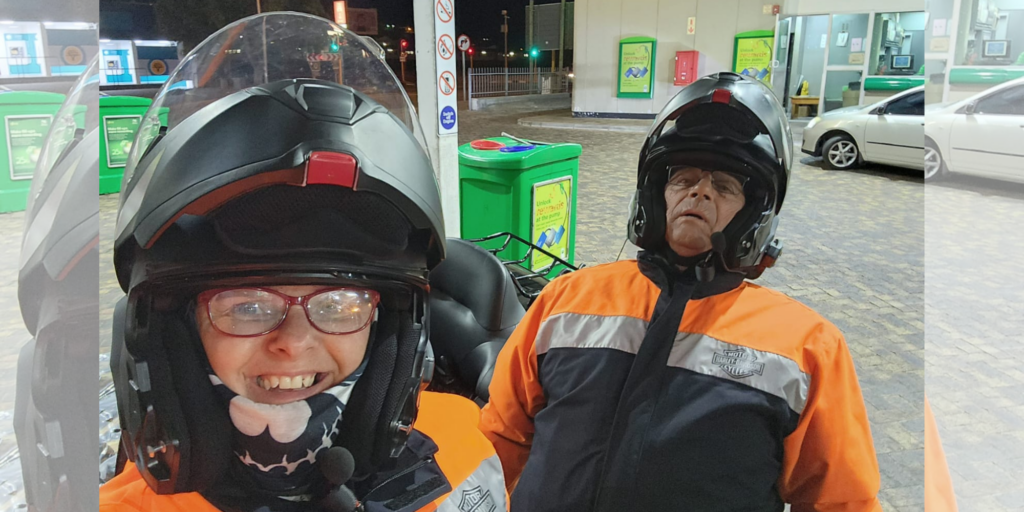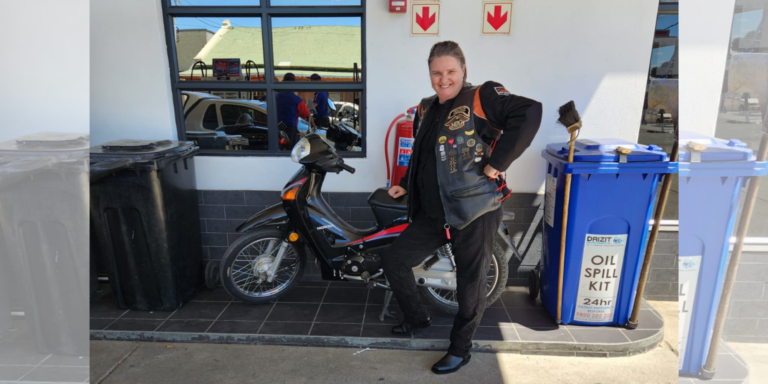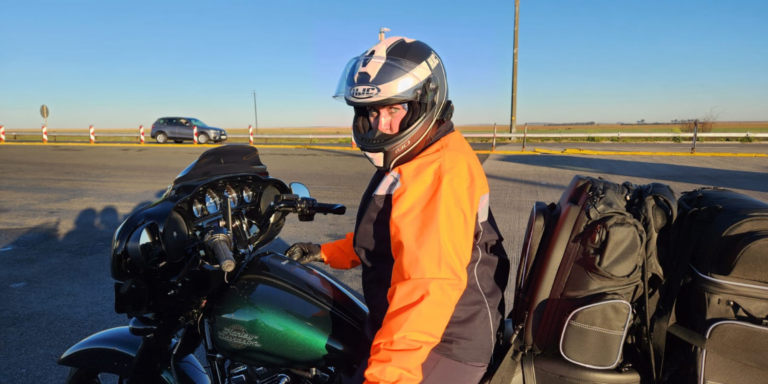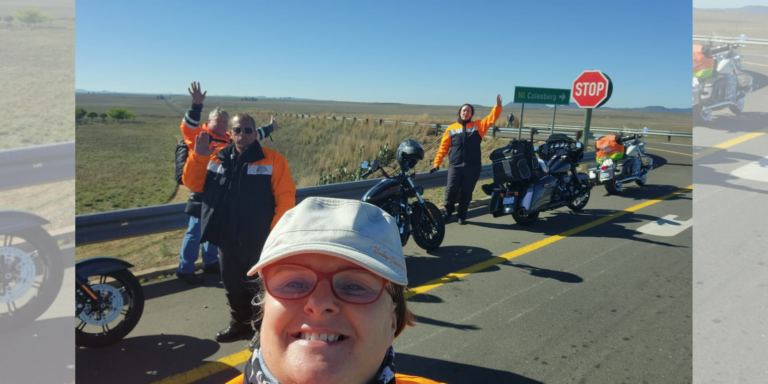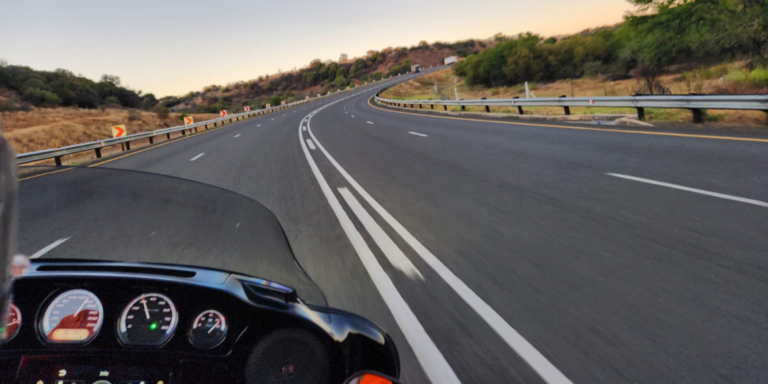Words: Cobus van Zyl (Lamgat ZA)
Pics: The Lamgat crew & riders
Lamgat is a local colloquialization of Iron Butt, a 1,000 miles in 24 hours on a motorcycle, (1,610km in the metric world), a bucket list item for quite a few bikers across the world. And, in case you were wondering, Cape Town is not far enough from Johannesburg for this trip, you must either take some serious detours off the N1 or start off in Mokopane, (Potgietersrus in the old language).
The most well-known formal certification for a trip like this, (and many more rides that are even more taxing), is the Iron Butt Association in the United States. This is an endurance event and most riders would not want to do it without some kind of formal recognition, bragging rights and a pat on the shoulder. The Iron Butt association had a presence in South Africa and there are still some remnants of it visible but, for the most part they do not do certificates and badges any more for us riders here at the southern tip of Africa. Enter Lamgat, (lamgat.co.za), a proudly South African version that may be a bit more accurate on the butt description after such a ride.
The Group and group rules
Once it becomes known that a trip like this is in the planning, people want to join, maybe after careful consideration, maybe on the spur of the moment, only allow the former in. Important here is the compatibility of the group, both regarding riding habits and motorcycles. Do not mix speed bikes, scooters, and cruisers in one go, it will only frustrate some riders. Be clear on expectations as well as rules of engagement. We got together at the planning stage and determined the following rules:
- In typical Top Gear fashion, we wait for no-one. In case of break-down, fatigue, accident or whatever the holdup is, the rest will carry on except if leaving him/her would endanger a life.
- We determined our maximum speed when in the group, less than 140 km/h, don’t commit to an average speed; it might be impossible for some riders to maintain.
- Once you overtake you stay at speed, the ones behind must catch up, you may be caught again soon behind a truck.
- Rotate positions after every stop, the rider in front needs to be more alert for potholes and other road conditions which is tiring and the riders at the back often need to travel faster to catch up.

Routing
We had a specific destination in mind as we wanted to attend a Harley Davidson rally in Saldanha Bay that weekend. We were lucky in that we had brilliant weather the whole way, by linking the trip to a fixed date event you always run a risk that you may go ahead even if bad weather and good sense dictates you should go back to bed.
We should have planned to go to Saldanha on major roads, either the R7 or the N7, and kept off the small back roads, (Gerrie suggested this in fact). As our planning put us in the Cape Town vicinity at 5pm, and we did not want to encounter traffic, we made the ill-fated decision to travel the last 200+ kms on small rural backroads.
Lessons learned:
- Try not to have a fixed date that is linked to another event, if it rains when your alarm clock goes off, message the others and go back to sleep, you can try again next week.
- Stay on major routes for most, if not all the way. Being tired, riding on small pitch dark roads are not only not fun, it is taking unnecessary risks.
- Forget scenic routes, this is an endurance event, you will not get bored, you will get tired.
Starting
We planned to do most of our night riding in the beginning of the trip by starting at 2am. I knew I was going to battle to sleep before we left, (too excited, like a child), and took a mid-morning nap from 11am to 2pm. I had everything packed and went to bed at 8pm and slept a while, waking up just after 11pm, spending quite a bit of time waiting alone at that BP station. A dark N1 did not pose real challenges, Marinda fitted monster spotlights the previous day on her bike and took the lead which helped a lot.
Stopping
The proof you need is a picture of each petrol slip next to your odometer. Practise this, (duh!), as we actually found it quite hard with the Harleys changing display the whole time. I have quite a few pictures showing my slip with the bike showing that my side stand is out instead of odometer reading. We only made provision for 10 minutes per stop, to fill up, take the picture, visit the little boys/girls room, eat and drink something and then gear up and leave within ten minutes is quite a feat…. and not lekker. I remember riding through Robertson past a restaurant with lights, music and patrons enjoying themselves, feeling very sorry for myself that I cannot just stop and take the load off for half an hour. We all had biltong, nuts, crackers and such, (no sugar), as food for the whole trip with water and water with re-hydrate. Marinda and I each had a Coke Zero at Uniondale, (spoiled ourselves at 1,100 km into the trip), and we all had a coffee in Piketberg around midnight, our last stop before destination Saldanha.
Riding
If I remember correctly there were 4 or 5 long stop and go roadworks between Colesberg and Middelburg. At Colesburg, we were only 10 minutes behind schedule, at Uniondale it grew to an hour and a half. Most of the literature would tell you that speed is not your friend on these endurance trips. Apart from the fact that it tires you with the added concentration needed, you lose the advantage quickly in the reduced fuel consumption of your steed, it is very difficult to make up even one extra stop with additional speed. We tested this hypothesis when some of the group wanted to ride faster from Uniondale. We decided to split up with 2 bikes travelling faster while Ewert on the Sporty and myself will keep to the original speeds. Without discussing it we ended up stopping less and shorter while the Fast Group found themselves with slightly longer stops and resting times. Ewert and I caught up with them at every stop and, when darkness fell in Barrydale, we continued the journey as a pack again.
Riding on small rural roads in the dark, with more than 1200 kilometres and 18 hours riding time behind us was quite nerve wrecking. Reaction time is compromised and we all agreed the next day that we would probably not have been able to avoid an unexpected hazard on the road. Ewert, on the naked Sporty with no screen, relatively poor headlight and a backpack on his shoulders felt this more than the rest of us. At this stage we adapted our rules, stating that each of us is responsible for the bike behind you. Just after Robinson, Gerrie signalled with his headlights and we stopped to hear that we have lost Ewert somewhere in town. We waited about 15 minutes, not sure about the next step when Ewert’s wife phoned, he lost control at Robinson Circle, hit the curb and fell down an embankment. Bike has lots of damage, Ewert is taken to hospital in an ambulance. Although concussed and dizzy with a suspected broken shoulder, he called his wife to tell us to continue, nothing we can do for him in hospital. We still had 300 km to go, it was already after 8pm so we pushed on albeit a bit more subdued. The total darkness, small roads and fatigue kept our speed to around 100 km per hour, so we were losing scheduled time with every kilometre travelled. At Wolseley we had a long telephone conversation with Ewert’s wife and we left 2 hours 15 minutes later than planned. From there it was a slow 200 km to our destination with a longer than planned coffee break in Piketberg. We pulled into the BP garage in Saldanha Bay at 01:18, more than 23 hours since we left Benoni.
Conclusion:
Our 1,000-mile journey was a test of endurance and lessons learned. Despite the challenges and setbacks, we achieved our goal and earned our Lamgat certification. This adventure was a true test of both our riding skills and our resilience.







